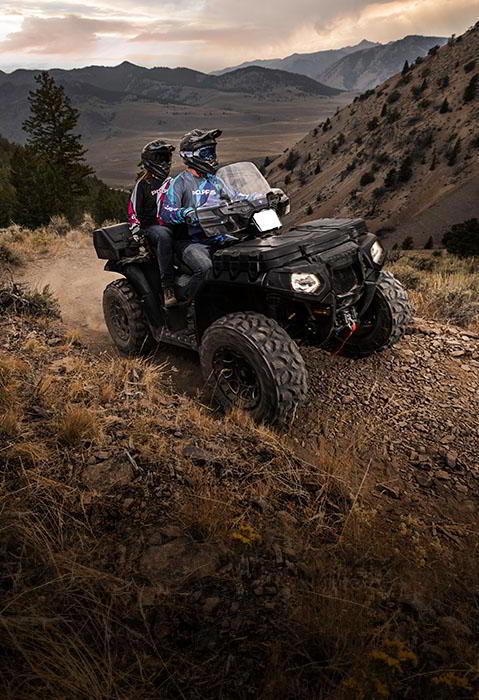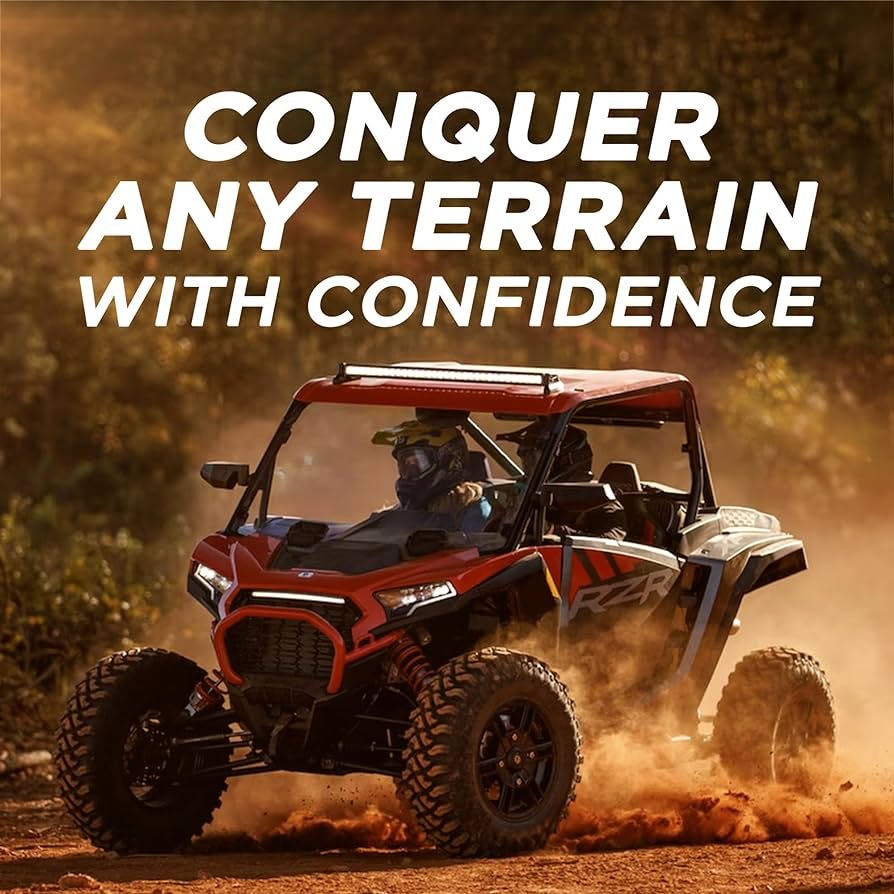Off-road safety is essential for protecting adventurers and their vehicles. It involves preparation, awareness, and the right equipment.
Venturing off the beaten track can be thrilling, but it also carries inherent risks that demand respect and caution. Proper off-road safety practices ensure that enthusiasts can enjoy rugged landscapes while minimizing danger. Before setting out, it’s crucial that off-roaders equip themselves with knowledge of their vehicle’s capabilities, potential environmental hazards, and necessary survival skills.
Training in vehicle recovery, first aid, and navigation can significantly reduce risk. Ensuring your vehicle is in peak condition with appropriate safety gear like roll cages, skid plates, and off-road tires is just as important. By adhering to these safety protocols, off-road adventurers can confidently tackle challenging terrains and return safe from their exhilarating expeditions.
Off-road Safety Essentials: Conquer Terrain Confidently!
Understanding the fundamentals of off-road safety is critical for enthusiasts seeking thrilling but secure adventures. Engaging with challenging terrain necessitates a blend of respect for nature, mechanical know-how, and self-sufficiency. Key principles include always informing someone of your travel plans, sticking to established trails, and respecting weather conditions to avoid unnecessary risks.
Identifying the non-negotiable items for off-road adventures ensures preparedness for any eventuality. Essential equipment encompasses a reliable winch, recovery boards, proper off-road tires, and a well-stocked first aid kit. Sufficient water and food supplies, navigation tools, and emergency communication devices cannot be overstated in their importance.
| Training and Knowledge Requirements | Necessity |
|---|---|
| Vehicle Handling Skills | Critical |
| Basic Mechanical Repairs | Essential |
| Navigation Proficiency | Mandatory |
| First Aid Training | Highly Recommended |
Training and knowledge requirements for safe off-roading augment your readiness. Mastery in 4×4 vehicle handling, the ability to perform basic repairs, map reading and GPS navigation skills, and first aid proficiency are all vital. Participating in off-roading courses and workshops can dramatically boost confidence and capability in unpredictable environments.

Credit: www.polaris.com
Assessing Your Vehicle’s Readiness
Assessing the vehicle’s mechanical integrity before departure is crucial for any off-road adventure. Ensure that the vehicle’s brakes, suspension, and engine are in top condition. A thorough check of fluid levels, including brake fluid, coolant, and engine oil, should precede any trip. Inspect the tire pressure and tread, ensuring they are well-suited for the terrain you plan to tackle.
Essential off-road vehicle modifications might include upgrading to all-terrain tires, installing a lift kit for increased ground clearance, and adding a winch and skid plates for protection. It’s wise to equip your vehicle with aftermarket off-road lighting to enhance visibility during your journey.
Regular maintenance routines for off-road vehicles play a pivotal role in performance and safety. Scheduling consistent service appointments to assess the vehicle’s condition post-trip is vital. Checking and cleaning air filters, along with a post-off-road inspection of the vehicle’s undercarriage for any damage, will help maintain its longevity.
Preparing Your Off-road Survival Kit
Ensuring safety off-road demands a well-prepared survival kit tailored for the unanticipated conditions of remote environments. It’s crucial to pack a comprehensive first aid kit that includes bandages, antiseptics, pain relievers, and essential medication that could mean the difference between a minor setback and a life-threatening situation.
A dependable set of navigation tools—such as a GPS device, compass, and detailed maps of the area—is essential to maintain your bearings in unfamiliar terrain. These instruments can help prevent disorienting scenarios, allowing adventurers to retrace their steps if necessary.
Never underestimate the value of reliable communication devices. Satellite phones and two-way radios provide lifelines to the outside world, ensuring that help is within reach even in areas where cell service is non-existent. They are indispensable for coordinating with rescue teams or simply checking in with friends and family.
Understanding Off-road Navigation
Understanding off-road navigation demands proficiency in various techniques, including GPS and paper map navigation. Successful navigation begins with an in-depth understanding of your electronic devices and how to overlay digital maps for the most accurate terrain representation. Ensure the GPS is updated and functional before embarking on an adventure.
Equally vital is the skill to navigate using traditional paper maps, offering reliability when technology fails. Familiarize yourself with reading topographical lines and recognizing key natural landmarks to maintain orientation.
Integrating modern off-road apps and technology can greatly enhance your experience. Applications like Gaia GPS provide detailed offline maps and tracking features designed for the unpredictable nature of off-roads.
Fostering an awareness of natural landmarks and topography is essential. Identifying mountain ranges, valleys, and water bodies creates a mental map, thus increasing confidence in navigation abilities and ensuring an enjoyable and safe off-road experience.
Building Off-road Driving Skills
Building Off-Road Driving Skills necessitates a mastery of several techniques specific to various environments. Beginning with basic maneuvers, an off-roader must learn to navigate through mud, sand, and rocky terrain. Each surface presents unique challenges; mud requires maintaining momentum, sand demands precise throttle control to prevent sinking, and navigating rocks calls for careful wheel placement and slow speeds.
Advanced techniques include mastering hill descents and ascents, both of which require a controlled approach. For ascents, a steady pace and the correct gear are critical to avoid stalling or slipping backwards. Descents often require the use of engine braking and a low gear to maintain a slow, manageable speed. When tackling water crossings, it’s important to assess depth and flow, ensuring the vehicle’s air intake remains above water to prevent engine damage and to proceed with steady, consistent speed.
Changing weather conditions such as rain, snow, or fog call for an adaptive driving style. Reduced visibility and slippery surfaces require slower speeds and greater attention to the terrain ahead. Increasing following distances and avoiding abrupt maneuvers are key in maintaining control and ensuring safety during off-road explorations.
Anticipating Weather And Environmental Challenges
Anticipating Weather and Environmental Challenges is essential for a safe off-roading adventure. Proper preparation and understanding of extreme weather conditions can greatly reduce risks. It’s crucial to have a solid plan that includes bringing adequate supplies like water, non-perishable food, and a first-aid kit. Ensuring your vehicle is equipped with all-terrain tires and functioning four-wheel drive capabilities can make a significant difference.
Encounters with wildlife can be unpredictable while off-roading. Reacting calmly and knowing local animal behaviors is important to manage such situations effectively. Always keep a safe distance, avoid feeding animals, and store food securely to minimize attraction and risk.
Finally, being environmentally responsible is non-negotiable. Sticking to designated trails, avoiding sensitive habitats, and carrying out all waste preserves the natural surroundings for future enjoyment. Practices like these not only protect the environment but also ensure the long-term sustainability of off-road trails.
Emergency Response While Off-roading
Emergency response is critical while off-roading. Ensuring you have the proper equipment for vehicle extractions and recoveries is essential; this includes items such as a winch, tow straps, and traction mats. Being trained in their correct usage can mean the difference between a swift recovery and a dangerous situation.
For managing medical emergencies, always carry a comprehensive first-aid kit and know how to use it. It’s vital to have at least one person with CPR and first-aid training, and to understand evacuation routes for reaching professional medical help swiftly. Knowing the location of the nearest hospital or medical facility can save precious time during an emergency.
Fire safety is paramount in the wilderness. Carry a fire extinguisher rated for all types of fires and be familiar with its operation. Always adhere to local fire regulations and bans to prevent wildfires. Creating a defensible space around campfires and ensuring that all flames are fully extinguished before leaving the site are crucial steps for preventing forest fires.
Group Off-roading Dynamics
Traveling with companions is a cornerstone of off-road safety. The presence of fellow off-roaders ensures assistance in the event of mechanical failures, medical emergencies, or navigational challenges. A well-structured group enables collective problem-solving and resource sharing, significantly increasing the safety margin in remote or challenging environments.
By establishing a lead and tail vehicle system, groups can maintain organization on the trails. The lead vehicle scouts ahead, identifying potential hazards and choosing the safest routes, while the tail vehicle acts as a sweeper – ensuring no one is left behind and providing help if necessary. This system ensures that the group remains intact and can respond quickly to any issues that arise.
Effective communication signals are critical among group members to convey messages over the noise of engines and across distances. Hand signals, radio communication, and standardized flagging procedures help maintain a constant line of information flow, allowing for real-time updates and coordinated maneuvers. These signals are essential for the safety and cohesiveness of the group throughout the off-roading adventure.
Responsible And Sustainable Off-roading Practices
Responsible off-roading means abiding by local laws and regulations, ensuring that nature stays unaffected by our recreational activities. Before heading out, verify that the area is open to off-road vehicles and comprehend any special requirements or limitations. This respect for boundaries and rules helps in conserving the environment and maintaining positive relationships with land management authorities and local communities.
Reducing environmental impact is crucial, and it begins with sticking to established trails to avoid disrupting native flora and fauna. Off-roaders should practice “Leave No Trace” principles, such as carrying out all trash and minimizing noise pollution. Maintaining your vehicle to prevent fluid leaks can also help protect the ecosystem.
By participating in conservation efforts with the off-roading community, enthusiasts can contribute to the preservation of these natural areas. Engagement can take the form of volunteer trail maintenance days, donations to local environmental organizations, or advocacy for responsible trail use. Community cooperation ensures that these recreational spaces remain available and pristine for future generations.
Frequently Asked Questions Of Off-road Safety
How To Safely Drive Off-road?
For safe off-roading, engage 4WD, maintain low speeds, use appropriate tires, watch ground clearance, and stay focused on unpredictable terrain.
What Are The Risks Of Off-road?
Off-road driving poses several risks, including vehicle damage, getting stuck, accidents due to rough terrain, potential rollovers, and personal injury. Always practice safety and prepare for unpredictable conditions.
Is It Safe To Go Off-roading Alone?
Going off-roading alone is not recommended due to potential risks. Always inform someone of your route and expected return, carry emergency supplies, ensure your vehicle is off-road capable, and have a means of communication in case of an emergency. Travel with a companion when possible.
What Is An Orv In Minnesota?
An ORV in Minnesota refers to an Off-Road Vehicle used for off-highway travel on natural terrain.
Conclusion
Venturing off-road offers an adrenaline rush unlike any other. Staying safe ensures the adventure continues. Equip yourself properly, remain vigilant, and respect the terrain. By embracing these practices, the thrills of off-road exploration are matched with a commitment to safety.
Remember, every journey’s success is measured by a safe return.




